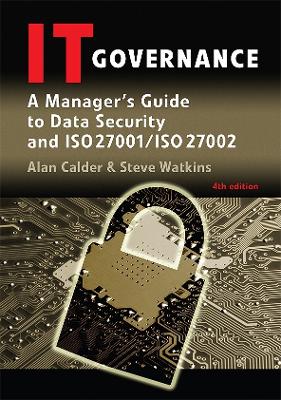Pocket Guides: Practical It Governance
2 total works
Information is widely regarded as the lifeblood of modern business, but organizations are facing a flood of threats to such 'intellectual capital' - from hackers, viruses and online fraud. Increasingly, data protection, privacy regulations, computer misuse and regulations around investigatory powers are part of a complex and often competing range of requirements to which directors must respond. IT Governance will be essential to board members, executives, owners and managers of any business or organization that depends on information, that uses computers on a regular basis or that has an internet aspect to its overall strategy.
With full coverage of the Turnbull Report and the Combined Code (in the UK), and the Sarbanes-Oxley Act (in the US), the book examines standards of best practice for companies looking to protect and enhance their information security management systems, allowing them to ensure that their IT security strategies are co-ordinated, coherent, comprehensive and cost effective. Each book comes with password-protected access to the www.itgovernance.co.uk website, for the latest news updates in this dynamic and constantly-changing sector.
With full coverage of the Turnbull Report and the Combined Code (in the UK), and the Sarbanes-Oxley Act (in the US), the book examines standards of best practice for companies looking to protect and enhance their information security management systems, allowing them to ensure that their IT security strategies are co-ordinated, coherent, comprehensive and cost effective. Each book comes with password-protected access to the www.itgovernance.co.uk website, for the latest news updates in this dynamic and constantly-changing sector.
This pocket guide is designed to provide the reader with a basic understanding of how an organization's Information Technology supports and enables the achievement of its strategies and objectives. IT Governance recognizes that Information and Information Technology is at the heart of the modern economy - and at the heart of the modern business. It is a critical component of corporate governance and this pocket guide provides an introduction on how to approach this complex subject. This pocket guide describes the drivers for IT governance; why it matters; the relationship between IT governance, risk management, information risk, project governance and compliance risk; lists the symptoms of inadequate IT governance and the benefits that can be won by implementing an IT governance framework, and describes - in principle - how to go about doing this.

